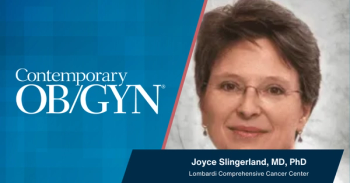
Minimally Invasive & Non-invasive Treatment of Fibroids
From the 34th Annual Meeting - Chicago, Illinois - November 2005
Hans van der Slikke, MD: It is November 11th, 2005. We are at the AAGL meeting in Chicago. I am Hans van der Slikke, gynecologist from Amsterdam. I have the pleasure of having next to me Karen Rae Abbott who is a urogynecologist from Reno, welcome.
Karen Rae Abbott, MD: Thank you.
Hans van der Slikke, MD: I would like to talk about fibroids, especially what you see as new ways of treatments for fibroids presented at this AAGL meeting.
Karen Rae Abbott, MD: There are a lot of new things out. I think the most exciting is some of the new technology using robotics for laparoscopic myomectomies. Unfortunately most people that deal with fibroids, and I do not know of your experience in your country, the minute you discuss suturing they freak out. So, people have been looking for alternative therapies so they do not need to do suturing. Between some of the new suturing devices and also the robotics there are a lot more that can be done now, minimally invasively.
The first thing is to educate the patients of what their options are. They vary from learning to tolerate the problem as long as it is not life threatening, medical therapy or uterine artery embolization in those patients that are not desiring future pregnancies, because the statistics for pregnancies after that have been, uncertain shall we say, or surgical intervention. Of course it depends on the skill of the surgeon, whether they feel comfortable with a laparoscopic approach or not, or hysteroscopic approach for that matter. There are a lot of options out there and the patients need to be aware of them.
Hans van der Slikke, MD: So, talking about minimally invasive treatments like embolization and clipping the artery, what is your preference?
Karen Rae Abbott, MD: I’ve been doing laparoscopic myomectomies for about ten years, so I am very comfortable with them, and our patients do really well and have successful pregnancies afterwards. In fact, I was involved in a clinical trial when embolization first started. I was part of the laparoscopic/hysterectomy arm, and our patients did much better than the embolization arm in terms of post-operative pain and patient satisfaction. I think it depends on how comfortable you are with minimally invasive technology, and I am.
Embolization has its moments, especially in patients that are not good surgical candidates, or they have symptomatic fibroids. But when you deal with patients that have self-embolized fibroids, knowing how they feel the pain they experience; if you can go in and resect them minimally invasively, so they do not have that embolization pain, and they can persist for a time, I’m more comfortable with that.
Hans van der Slikke, MD: Let’s talk about this trial you did. Were there any women in the embolization arm who had failure of their ovarian function?
Karen Rae Abbott, MD: Yes, there were several women who had premature ovarian failure as a result of the embolization. There were actually two patients who ended up having to have surgery because of intractable pain after the embolization. I think that patients need to be aware that it sounds wonderful, but it is not necessarily 100%. It also depends on if there are multiple fibroids, and what the sizes are. If you are dealing with one big fibroid that makes a lot more sense than if you have a uterus filled with them. You really have to treat it on a case-by-case basis, as you know.
Hans van der Slikke, MD: Yes, it is a very customized treatment, depending on the number and the size of the fibroids, and the localization of course. There are also some other therapies shown here that are almost non-invasive, like the focused ultrasound treatment. Did you see that?
Karen Rae Abbott, MD: That is very interesting. I will be interested to see how it is five years out. The problem with new technology is that sometimes it looks really wonderful, then five years later you find out, just like some of the old meshes, the original categoric fashion meshes that looked wonderful and two years later they were gone. Like anything, you have to see.
Hans van der Slikke, MD: That’s true. I think already they have a couple of hundred patients at hospital. It seems quite revolutionary.
Karen Rae Abbott, MD: It looks very interesting, it does.
Hans van der Slikke, MD: And did you have experiences with other treatments, like cryomyolysis?
Karen Rae Abbott, MD: Yes, we used to do that. Before, we used to go in and try cryomyolysis before they had embolizations, especially for small superficial fibroids. I consider that an old technique, not a new one.
Hans van der Slikke, MD: I agree with you on that. Was there anything else we did not cover?
Karen Rae Abbott, MD: I cannot think of anything we have not covered!
Hans van der Slikke, MD: I thank you very much. The most important thing is that women know that it is seldom necessary to remove the uterus.
Karen Rae Abbott, MD: Absolutely! I think uterine preservation is something that is very important and I think that women are becoming more aware of that. I think in generations past it was rather like; “ Well, let’s just get everything out” and now they are finding that there are alternatives to that.
Hans van der Slikke, MD: Thank you very much.
Karen Rae Abbott, MD: Thank you very much too!
Newsletter
Get the latest clinical updates, case studies, and expert commentary in obstetric and gynecologic care. Sign up now to stay informed.











